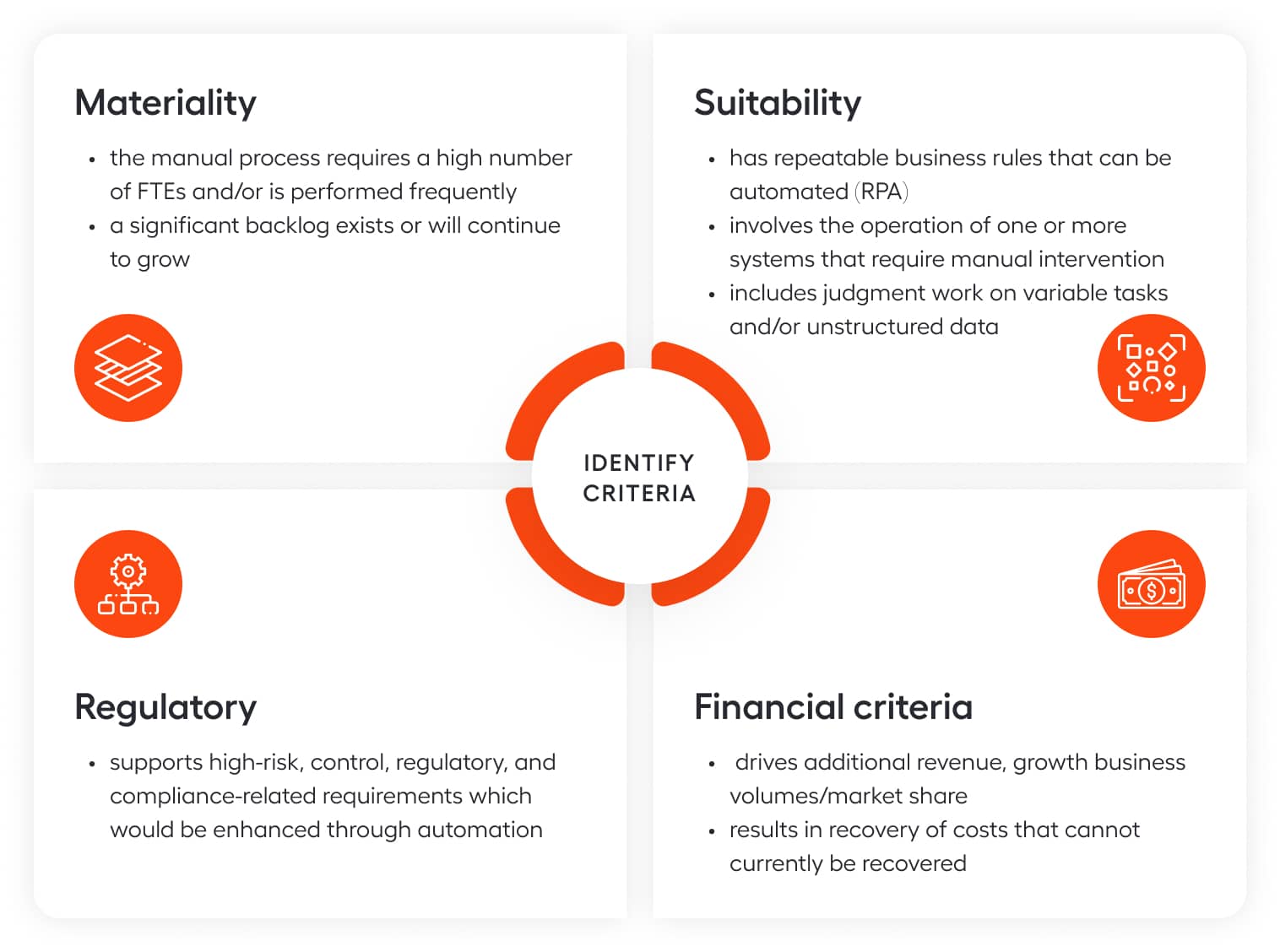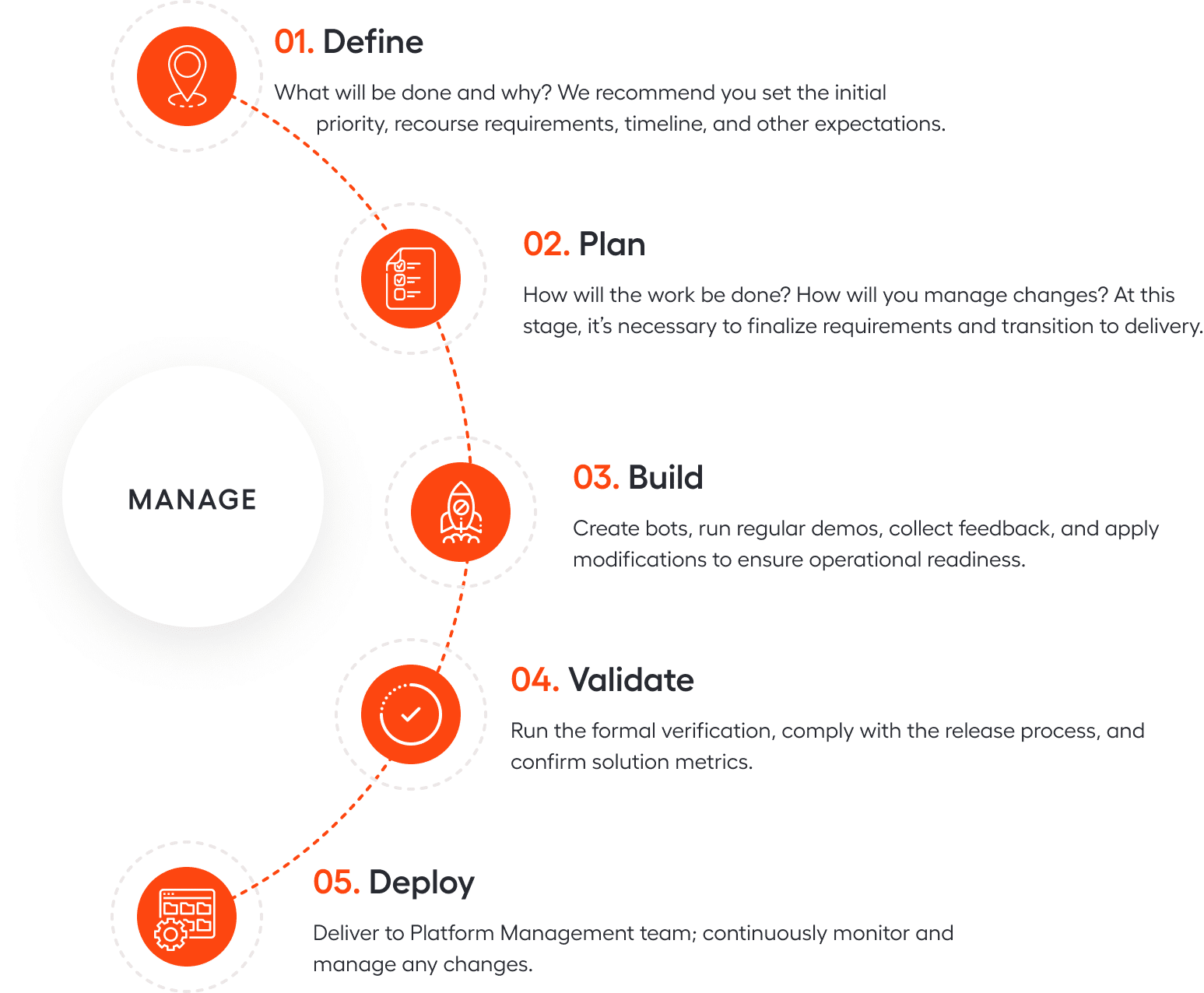When it comes to implementing automation, businesses are eager to get results as fast as possible. But it’s crucial to recognize that rushing automation, without a thoughtful plan, is a mistake.
The approach must start with a comprehensive discovery stage. Patiently building a fully developed plan saves time, resources, and headaches in the long run — ultimately leading to more efficient development and a clear automation pathway.
During discovery, we recommend your team analyzes which automation use cases to implement, determine possible pitfalls, establish customer- or user-experience priorities, define timelines, agree on budget parameters, and set business goals. We have named five steps in discovery: identify, qualify, assess, prioritize and manage.
Let’s briefly consider each step.
Identify
When exploring opportunities for automation, businesses should consider technical feasibility, but also focus on long-term value. How will your company accurately measure and understand the business impacts of automation? There are four major types of criteria when assessing whether to automate a business process: materiality, suitability, regulatory, and financial.

Qualify
To qualify an automation use case for a process, you must examine the current approach in detail, through documentation, actual data, and a step-by-step demonstration. For documentation, a best practice is to review existing process diagrams, standard operating procedures, and training manuals. It’s important to review actual data involved in a process to understand the task itself (i.e., what data enters the process and what is the expected output.)
Typical data and documentation can include:

Finally, subject matter experts (SMEs) should provide a demo of the current process. (Review click-by-click steps, data, screens, decisions, etc.)
Assess
To choose initial automation opportunities, consider how you will measure various benefits of applying automation elements, so you can prove how they deliver value right away. These metrics can include:

Business goals
Aligning to and achieving business goals (not just conducting technology experiments), will attract stakeholder engagement that adds value to an automation proposal.

Success criteria
Assess a set of extra benefits and features that provide measurable benchmarks to determine a successful automation path.

External influences
Assess factors such as market behavior, competition, changes in the regulatory environment, etc.
We offer a process questionnaire that allows for quick assessments of business processes. Here, your SMEs document each process, which not only helps you assess the process’ suitability for automation but also is a way to practice demo sessions with SMEs.
Prioritize
Prioritize automation use cases based on solution design, key metrics, change management requirements, leadership priorities, etc. Specific criteria and guidelines can help in this step, so we suggest giving each criterion a positive or negative numerical score, which helps prioritize the processes for automation. Collect priorities from top management and validate them according to your local situation to present a robust business case.
Manage
This stage of automation includes the following steps: define, plan, build, validate, and deploy the work. Each step includes a scope of actions.

Summary
This is just the tip of the iceberg called “discovery.” We hope you found it insightful and helpful. All these concepts are explained further in Automation Academy’s Discovery Process course, available to our customers and partners.
Let us know if you’d like to learn more!





























